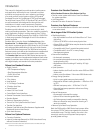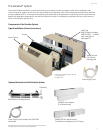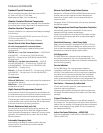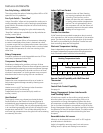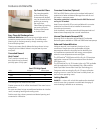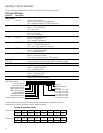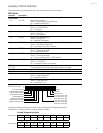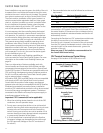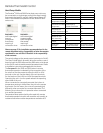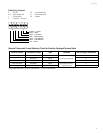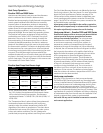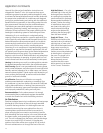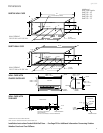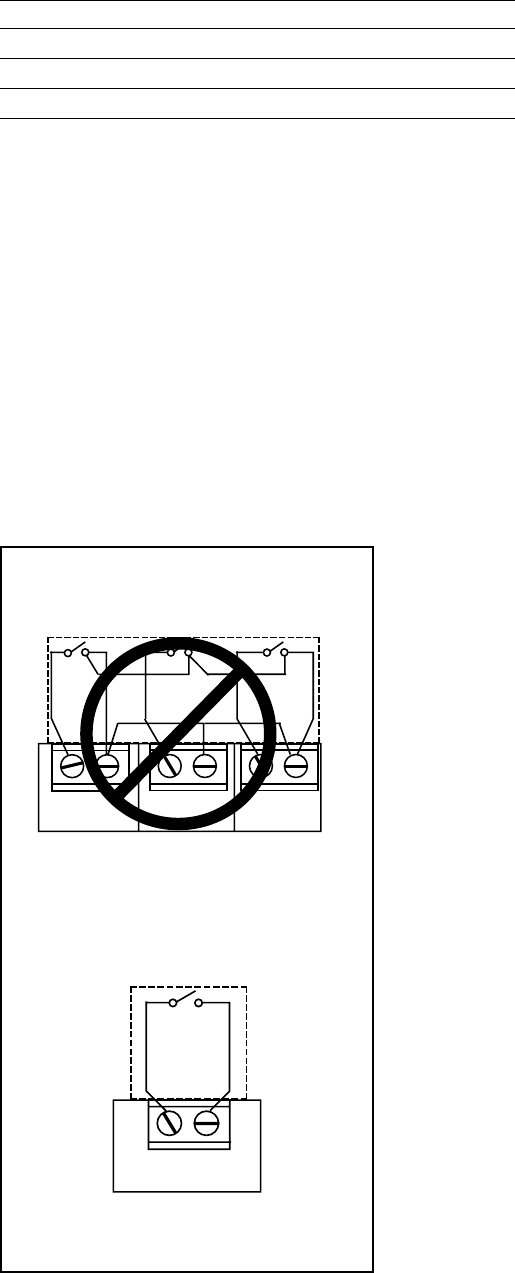
14
Central Desk Control
Some installations may want to govern the ability of the unit
to operate from a control device remote to the unit or even
remote to the room in which the unit is located. The general
term given to systems such as this is Central Desk Control.
The most common installation of this type of system is a
switch mounted at the registration desk and, upon guest
check-in, a button is pushed or a switch is moved to allow
the air conditioner to operate. Likewise, when the guest
checks out the device is put into the “OFF” position so the
unit will not operate while the room is vacant.
It is not necessary that the controlling device be located
at a central desk to employ a device that will control the
unit operation. For instance, in some resort areas devices
are connected to sliding glass doors and opening the door
causes a contact to close, turning the air conditioner off.
This prevents energy being wasted by operating the air
conditioner when warm, humid air is entering the room.
Some systems operate by motion sensors or heat sensing
detectors mounted in the room. These types of systems
determine occupant presence in the room and allow the
unit to operate; if no one is in the room the device signals
the air conditioner to turn off.
Zoneline
®
models offer Load-Shedding capabilities on
units connected to Central Desk Control Systems. For more
information on the models’ Load-Shedding Feature, see
page 10.
There is a wide variety of devices available, each with
its own benefits and constraints. While GE does not offer
components that are external to the unit for a Central Desk
Control (CDC) system, GE Zonelines are compatible with most
CDC and Energy Management systems. Zonelines provide a
24 VAC circuit that powers the Central Desk Control system
and no external power is needed.
All Zoneline 2900, 3900, and 5800 Series units are compatible
with simple on/off 2-wire Central Desk Control systems.
Consult with the provider of other energy management
systems to be sure they are compatible with the GE Zoneline.
Zonelines have standard connectors factory-installed to
provide a CDC interface that permits the unit to be connected
to most of the energy management systems. The devices
connected to the Zoneline units require no power supply or
transformers external to the unit.
Important CDC Comments (all series applicable)
1. When the switching device closes the circuit of the CDC
conductors, the unit operation stops.
2. Do not use a common buss (at the unit or at the switch
panel) in the wiring. Both wires comprising the circuit must
connect to the unit connectors and to the controlling
switch. Running one wire from one unit to another unit is
common bussing and may damage internal components
or cause erratic operation of the system.
3. A 24-volt transformer is contained within the Zoneline.
No external voltage may be applied to the unit through
the CDC terminals. (Voltage on the CDC conductors is
24 volts AC.)
4. Recommended wire size must be followed as a minimum
requirement.
Wire Size #AWG Maximum Allowable Length
#22 600 Ft.
#20 900 Ft.
#18 1500 Ft.
#16 2000 Ft.
Freeze Sentinel
™
remains operational when the unit is
connected to a CDC system. Even if the unit is turned “OFF” at
the central location, if the sensor at the unit detects the low
temperature, the electric resistance heaters and the fan will
automatically turn on.
Connecting the Zoneline to a CDC system does not eliminate
the ability to connect the unit to a remote thermostat.
Once the circuit is “opened,” and control of the unit removed
from the CDC system, the selected controls - either the unit
mounted control or the remote thermostat - govern the
operation of the unit.
Please see page 57 for installation recommendations for
the Central Desk Control wiring.
CDC Terminal Location and Typical Wiring
See page 15 for location of CDC terminals on unit.
Unit #2
Unit #1
Unit #3
Example of Common Bussing
NOT PERMITTED
CDCTerminals
onZoneline
INCORRECT Common Bussing
Normally Open
Switch -
Unit Operational
Typical Wiring
(All Wiring Shown Is Field Supplied)



